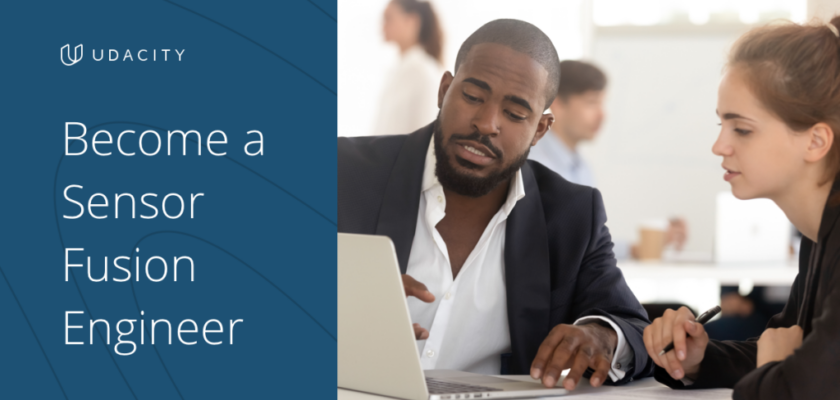Download and Learn Become a Sensor Fusion Engineer Udacity Nanodegree Course 2023 for free with google drive download link.
Learn to fuse lidar point clouds, radar signatures, and camera images using Kalman Filters to perceive the environment and detect and track vehicles and pedestrians over time.
Built in collaboration with
What You’ll Learn in Become a Sensor Fusion Engineer Nanodegree

Sensor Fusion Engineer
Estimated 4 Months
Learn to detect obstacles in lidar point clouds through clustering and segmentation, apply thresholds and filters to radar data in order to accurately track objects, and augment your perception by projecting camera images into three dimensions and fusing these projections with other sensor data. Combine this sensor data with Kalman filters to perceive the world around a vehicle and track objects over time.
Become a Sensor Fusion Engineer Nanodegree Intro Video:
Prerequisite knowledge
You should have intermediate C++ knowledge, and be familiar with calculus, probability, and linear algebra.
For aspiring sensor fusion engineers who currently have a limited background in programming or math, we’ve created the Intro to Self-Driving Cars Nanodegree program to help you prepare. This program teaches C++, linear algebra, calculus, and statistics.
If you have a limited background in programming, we’ve created the C++ Nanodegree program to help you prepare for the coding in this program.
Lidar
Process raw lidar data with filtering, segmentation, and clustering to detect other vehicles on the road.
Project – Lidar Obstacle Detection
Detect other cars on the road using raw lidar data from Udacity’s real self-driving car, Carla! Implement custom ransac and euclidean clustering algorithms.
Cameras
Fuse camera images together with lidar point cloud data. You’ll extract object features, classify objects, and project the camera image into three dimensions to fuse with lidar data.
Project – Camera and Lidar Fusion
Detect and track objects from the benchmark KITTI dataset. Classify those objects and project them into three dimensions. Fuse those projections together with lidar data to create 3D objects to track over time.
Radar
Analyze radar signatures to detect and track objects. Calculate velocity and orientation by correcting for radial velocity distortions, noise, and occlusions.
Project – Radar Obstacle Detection
Calibrate, threshold, and filter radar data to detect obstacles in real radar data.
Kalman Filters
Fuse data from multiple sources using Kalman filters, and build extended and unscented Kalman filters for tracking nonlinear movement.
Project – Unscented Kalman Filters
Put your skills to the test! Code an Unscented Kalman Filter in C++ to track highly non-linear pedestrian and bicycle motion.
Become a Sensor Fusion Engineer Nanodegree Free Download Link:

